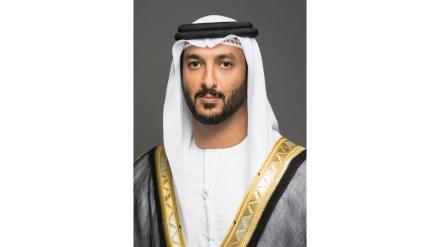The Comprehensive Economic Partnership Agreement (CEPA) between India and the United Arab Emirates (UAE) is a landmark trade deal aimed at enhancing economic ties and fostering mutual growth. With its initial focus on reducing tariffs and opening new trade avenues, CEPA is set to create significant opportunities for businesses in both nations.
As discussions about expanding CEPA continue, the emphasis is on ensuring that private sectors in India and the UAE fully utilize the agreement’s benefits.
In an exclusive interaction with the FinancialExpress.com, Abdulla Bin Touq, Minister of the Economy of the United Arab Emirates says this partnership is not just about economic gains but also about strengthening people-to-people connections, as seen in the UAE’s revamped visa policies that facilitate greater mobility and talent exchange.
According to him, the collaboration extends to future technologies, with both countries committing to joint ventures in digital infrastructure and artificial intelligence. As India and the UAE build on their strong historical ties, CEPA represents a strategic step towards a more integrated and prosperous future for both nations.
Following are excerpts from an exclusive interaction with Abdulla Bin Touq, Minister of the Economy of the United Arab Emirates:
There are talks about the expansion of CEPA – when will that happen and what more will be achieved?
The primary focus now is to ensure that our private sectors are maximizing the full scope of the deal, especially in the sectors where tariffs are being reduced over time. We are still at the beginning of our journey so it’s important to ensure that the business communities in both countries are able to understand and leverage the opportunity in front of them. Both sides believe there is huge potential for UAE-India trade and investment that is yet to be fully realized.
Can you share any success stories or case studies of UAE-India collaboration in future technologies?
The UAE-India economic partnership is founded on strong historical ties between our two countries, reinforced by a shared vision to leverage technology and other future sectors for driving economic growth and societal development.
Following the signing of several strategic agreements between the UAE and India in January 2024 in sectors including renewable energy, food processing and healthcare, yet another MoU was signed by the two countries setting out a framework for the expansion of bilateral investment cooperation in the digital infrastructure sector. It marks a significant step forward in the development of opportunities in digital infrastructure and artificial intelligence between both nations. Moreover, it will promote and facilitate investments in Digital Public Infrastructure (DPI), artificial intelligence and aspects related to R&D and innovation.
People to People: how easy is it for people to get visas to UAE? Any plans for increasing the flights between the two countries? Are you in talks with the government?
The UAE revamped its visa and residency systems by introducing more flexible visa programmes with an aim to enhance the flow of talent and tourism into the country. For example, the Golden visa is a long-term residence visa which enables foreign talents to live, work or study in the UAE while enjoying exclusive benefits.
Apart from the standard work visa, a newly introduced green visa now allows its holders to sponsor themselves for 5 years, eliminating the need for a UAE national or employer to sponsor the visa.
In addition, there is a virtual work visa for individuals who are employed by companies based outside of the UAE but wish to live and work remotely from the country. More recently, the UAE announced a new long-term residency visa known as the blue visa, which grants a 10-year residency to people who have made exceptional contributions towards protecting the nation’s environment. Tourists now have the option to apply for multiple entry visas.
The number of Indians in the UAE is projected to reach 3.3 million this year, increasing at a rate of 10.7 percent annually, that is an increase of 300,000 Indians annually.
India is one of the five largest markets exporting tourism to the UAE, as the UAE received about 3.1 million Indian tourists in 2022, an increase of 900,000 visitors, compared to 2.2 million visitors in 2021.
The UAE’s national carriers also operate daily flights to a number of Indian destinations, including New Delhi, Mumbai, Bangalore and Kerala among others. Currently, there are approximately 1,800 flights connecting these cities with various emirates each month.
